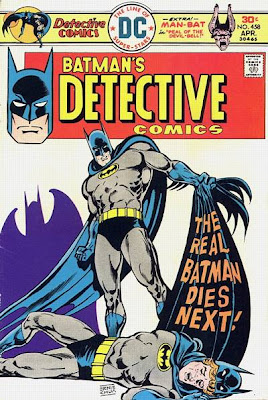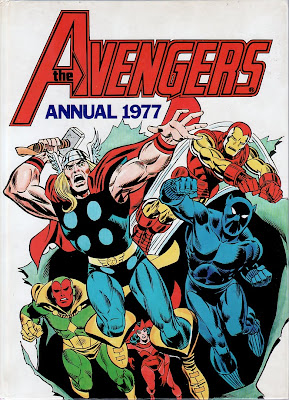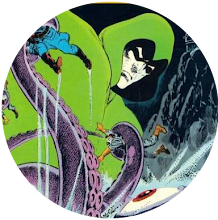 Not that I have a God complex but when I was a kid it wasn’t unknown for me to play at being Galactus.
Not that I have a God complex but when I was a kid it wasn’t unknown for me to play at being Galactus.Admittedly, as Galactus mostly sits on his own in his spaceship all day long, talking to himself, there weren’t exactly hours of fun to be had from this.
But, by cutting out a picture of Daredevil and sticking a paper helmet on him, I created a mini version of Galactus for Big Galactus to talk to. If you’re familiar with the late Frank Sidebottom and his somewhat makeshift puppet Little Frank then you’ll have some idea of the set-up.
Soon, bored with that, I took to shooting Little Galactus with my Dinky Toys’ UFO Interceptor. Quite what a UFO Interceptor had to do with anything, I have no idea but it shows how much I was grabbed by Galactus that I’d even rein in Commander Straker and the forces of SHADO to tackle him. Sadly, the Fantastic Four have no recourse to Commander Straker. When they meet Galactus, they have to do it all for themselves.
Of course, that isn’t strictly speaking true. When he first showed up they had the Watcher to help them, and this time out they have the High Evolutionary filling that much-coveted role of handily placed hyper-being.
What’s to do is Galactus has discovered the High Evolutionary’s Counter-Earth and is now out to eat it. Cue the Fantastic Four who can save Counter-Earth if they find another world willing to sacrifice itself to the big G.
It’s no surprise they don’t get far with that, as Mr Fantastic and the Thing find themselves on a planet of robots ruled by Torgo, while the Human Torch and the super-evolved ape Gorr land on a planet resembling medieval Europe. Neither set of natives is exactly amenable to being eaten and the heroes soon find themselves imprisoned. Meanwhile, as the issue reaches its dread climax, the High Evolutionary decides there’s only one thing for it. Following the failure of the FF, he has to take on Galactus himself.
I was also grabbed by Gorr the talking gorilla who doesn’t just talk but for some reason is gold and speaks like he’s just swallowed a thesaurus, making him Counter-Earth’s equivalent of the Beast.
There’s also the fact the Thing has lost his powers, and Ben Grimm has to wear a Thing-suit to fight the forces of evil. I’m not sure it was a good idea but at least, like Little Galactus’ survival chances against the UFO Interceptor, it was only ever going to be short-lived.























































































